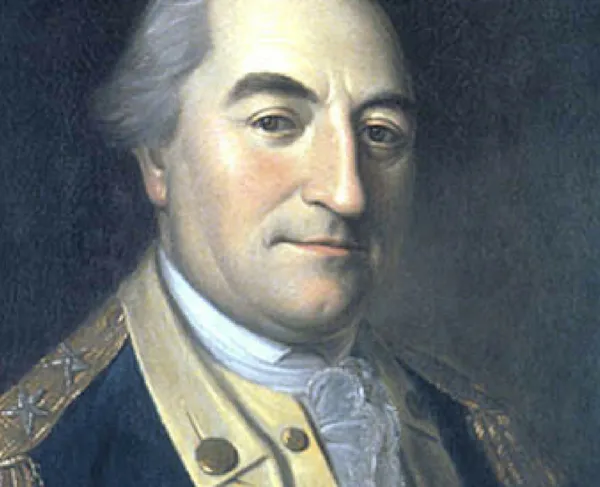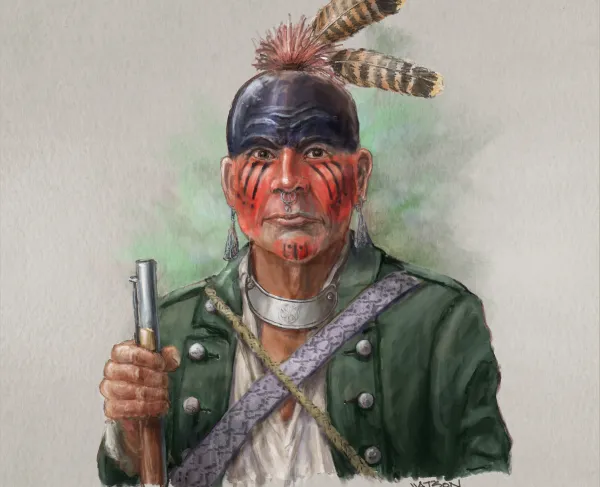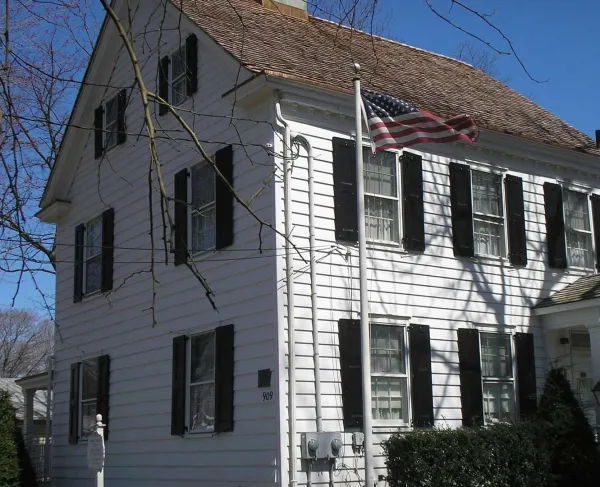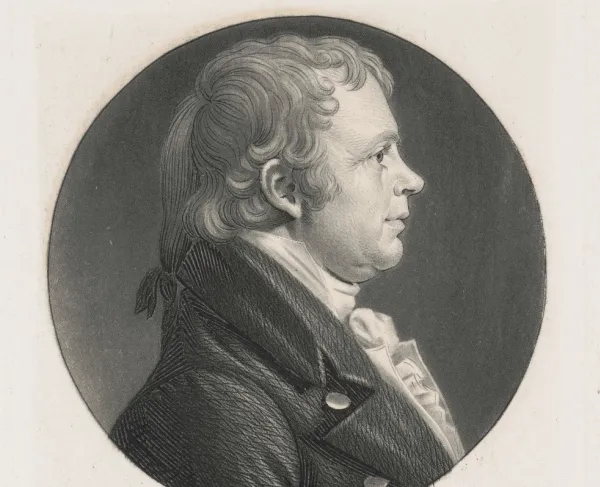Johann de Kalb

Not unlike other Europeans who were inspired by the ideals of the Enlightenment, the Revolutionary War also gave Johann de Kalb an opportunity to strike a blow at an old enemy, Great Britain. Born outside the Prussian city of Nuremberg, de Kalb entered the service of France and fought in the Seven Years' War. He eventually rose to officer rank and was made a Knight of the Royal Order of Merit.
At the end of the conflict, de Kalb was sent by the Duke de Choiseul to travel to North America. His mission was to gauge the sentiment of the colonists regarding their feelings toward Great Britian and determine the possibility of France fomenting a rebellion in an effort to regain territory lost in the Seven Years' War. de Choiseul, however, was replaced before de Kalb could present his findings and his report received little attention. Rather than return home to Prussia, de Kalb took up farming at his residence near Versailles.
Shortly after the outbreak of the American Revolution, de Kalb approached diplomats Silas Deane and Benjamin Franklin in Paris. In need of experienced and professional officers, Deane promised de Kalb a Major General's commission. Along with Marie-Joseph Paul Yves Roch Gilbert du Motier, Marquis de Lafayette, de Kalb returned to America in June 1777. The party landed at Charleston, South Carolina and traveled north to Philadelphia. de Kalb was with George Washington's army during the winter at Valley Forge, the Monmouth Campaign and the operations around New York City.
By the fall of 1779, the British commander, Sir Henry Clinton, decided to shift the Crown strategy to focus on the Southern colonies. Clinton's first target was Charleston, defended by Maj. Gen. Benjamin Lincoln and 5,000 Americans. Clinton opened the siege in early April 1780. This new British effort afforded de Kalb with an opportunity at field command. In the hopes of reinforcing Lincoln's garrison, Washington dispatched de Kalb to South Carolina at the head of the Maryland Division, made up of Continental Regulars from Maryland and Delaware. De Kalb and his men were unable to reach Lincoln in time. The beleaguered general surrendered to Clinton on May 12, 1780.
Undeterred by Lincoln's capitulation de Kalb continued his march. In response to the fall of Charleston, Congress appointed Maj. Gen. Horatio Gates to lead the American army in the south. Gates arrived at de Kalb's camp in the first week of July. The hero of Saratoga decided to strike the British, now under Lord Charles Cornwallis. Gates directed his force toward one of the British outposts at Camden, South Carolina.
On the morning of August 16, 1780, Gates deployed to meet Cornwallis several miles north of the village. He placed Virginia militia on his left, militia from North Carolina in the center and de Kalb's Continentals to his right. The Virginians faced some of Cornwallis's veterans, Light Infantry, and the 23rd and 33rd Regiments of Foot commanded by Lt. Col. James Webster. When the inexperienced militia faced Webster's bayonets, they quickly broke ranks and ran. The panic spread down the line and engulfed the North Carolinians. Gates himself got caught up in the panic-stricken flight and fled the field, leaving de Kalb to stand against Cornwallis.
When the battle opened, de Kalb faced Loyalist militia, British Legion Infantry and the Volunteers of Ireland under Lord Francis Rawdon. Unlike the situation on the left flank, de Kalb enjoyed some success as his men pushed back the British advance. When the American line collapsed, de Kalb and his infantry stubbornly remained on the field. De Kalb led a counterattack in an attempt to stem the tide, but Cornwallis committed his reserves, and the British infantry and dragoons swarmed around the American left and rear. Somewhere in the midst of the fight, de Kalb fell with some eleven wounds, the majority from the bayonet. As Gates's army retreated north, de Kalb was taken to Camden where he lingered for the next three days. He finally succumbed to his wounds on August 19 and was buried near the hospital where he died. In 1825, he was disinterred and reburied underneath a monument that stands in the yard of the Bethesda Presbyterian Church on East De Kalb Street in Camden. His original headstone is now part of the foundation of the steps of the Kershaw County Chamber of Commerce.





